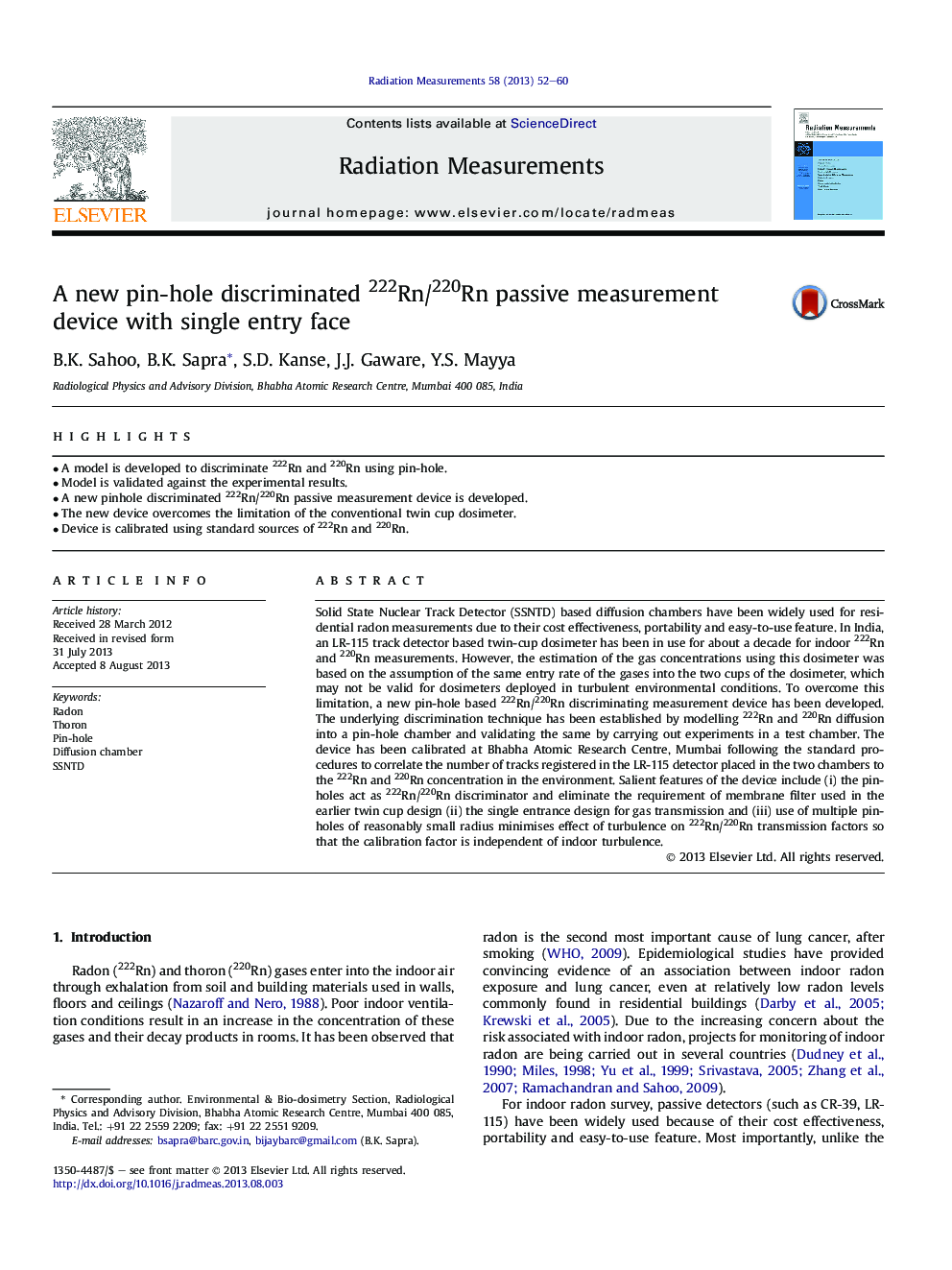| Article ID | Journal | Published Year | Pages | File Type |
|---|---|---|---|---|
| 1884985 | Radiation Measurements | 2013 | 9 Pages |
•A model is developed to discriminate 222Rn and 220Rn using pin-hole.•Model is validated against the experimental results.•A new pinhole discriminated 222Rn/220Rn passive measurement device is developed.•The new device overcomes the limitation of the conventional twin cup dosimeter.•Device is calibrated using standard sources of 222Rn and 220Rn.
Solid State Nuclear Track Detector (SSNTD) based diffusion chambers have been widely used for residential radon measurements due to their cost effectiveness, portability and easy-to-use feature. In India, an LR-115 track detector based twin-cup dosimeter has been in use for about a decade for indoor 222Rn and 220Rn measurements. However, the estimation of the gas concentrations using this dosimeter was based on the assumption of the same entry rate of the gases into the two cups of the dosimeter, which may not be valid for dosimeters deployed in turbulent environmental conditions. To overcome this limitation, a new pin-hole based 222Rn/220Rn discriminating measurement device has been developed. The underlying discrimination technique has been established by modelling 222Rn and 220Rn diffusion into a pin-hole chamber and validating the same by carrying out experiments in a test chamber. The device has been calibrated at Bhabha Atomic Research Centre, Mumbai following the standard procedures to correlate the number of tracks registered in the LR-115 detector placed in the two chambers to the 222Rn and 220Rn concentration in the environment. Salient features of the device include (i) the pin-holes act as 222Rn/220Rn discriminator and eliminate the requirement of membrane filter used in the earlier twin cup design (ii) the single entrance design for gas transmission and (iii) use of multiple pin-holes of reasonably small radius minimises effect of turbulence on 222Rn/220Rn transmission factors so that the calibration factor is independent of indoor turbulence.
